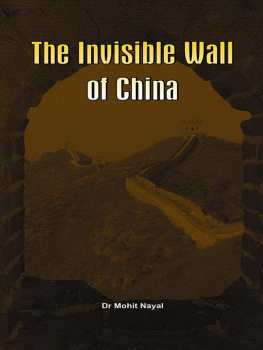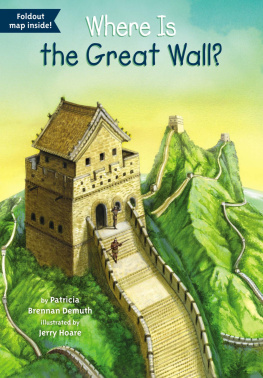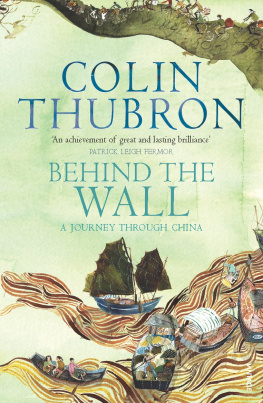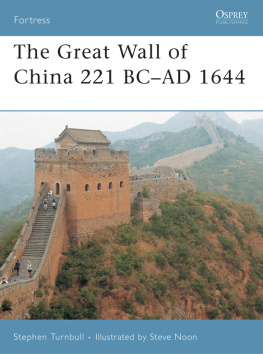E book published by
Vij Multimedia
Vij Books India Pvt Ltd
(Publishers, Distributors & Importers)
2/19, Ansari Road, Darya Ganj
New Delhi - 110002
Phones: 91-11-43596460, 91-11- 47340674
Fax: 91-11-47340674
e-mail :
web: www.vijbooks.com
Copyright 2012, United Service Institution of India, New Delhi
First Published: 2012
ISBN: 978-93-81411-71-1
All rights reserved
No part of this book may be reproduced, stored in a retrieval system, transmitted or utilised in any form or by any means, electronic, mechanical, photocopying, recording or otherwise, without the prior permission of the copyright owner. Application for such permission should be addressed to the publisher.
PREFACE
During the Cold War era, the Soviet Union had launched the military operations to spread their influence in Afghanistan. To stop the Communist supported governance from coming to power in Afghanistan, American promoted the local warlords to fight against the Soviets. In the war that lasted for nearly a decade, the Soviets were defeated in their aim and finally withdrew. However, ironically for the international community, this war, de facto, led to the growth of non-state actors. On Soviet withdrawal from the region, America also lost interest in Afghanistan and left behind groups, potentially armed with not only the weapons but with a staunch belief that they can defeat any army of the world and spread their radical fundamentalist views.
The seriousness of this cynical approach became evident to the world when the Taliban managed to take control overAfghanistan. Still, the worlds reaction was lukewarm. Soon Al Qaeda, the prudent force behind the Afghan regime, launched war against the United States of America. The world witnessed America being the victim of the 9/11 attacks. In 2001, America declared its intention to fight global terrorism. The international community extended its full support to the United States. Nations like Russia and China came forward to acknowledge the threat of terrorism and Islamic fundamentalism. Both these states had mutual concerns regarding the increase in extremist activity within the region of Central Asia.
On disintegration of Soviet Unions status quo, five new nations declared independence in Central Asia. A large majority of the people within the region were Muslims who were deprived religious freedom by the Soviets. Thus, the Islamic practice had gotten subdued and diluted. Therefore, need was generated to learn the Islamic norms and practices from the very start. This promoted many religious teachers from across the Islamic world to visit Central Asia. Some of them justified the violent means to spread Islam. Over a period, such groups have been able to influence a large number of young people.
Soon the fury of violent actions by organisations like the IMU and the Tahrir-a-Islam spread in Tajikistan, Kyrgyzstan, Kazakhstan, Uzbekistan, Turkmenistan, Russia and China. I have made an endeavour to highlight the background of the situations that were prevailing in Central Asia post the Cold War period. My focus was on the changing dimensions in which China has found itself. I feel that there is a need for China to address the issue of Islamic fundamentalists in Central Asia. If China fails to take concrete measures for curbing this problem, then the possibility of Xinjiang also becoming an unstable region, will arise. The economic interest attached with Xinjiang indicates that China cannot afford such a situation. Therefore, the government of China requires a very balanced and mature approach. China would surely face scrutiny for its fair acts without the legacy of working behind the closed Iron curtains.
I have also touched upon the policy adopted by China and Russia in the region before the arrival of the Americans. The influence of regional players in Central Asia may not be the only influencing factor in the near future. Many powerful nations have shown their keenness for involvement in the region, which still have a struggling economy and politically unstable governance. China too will have to come forward to help the region gain stability. Even China as a nation needs introspection into its stability. The younger generation within China may not follow Maos ideology for long. There are clear indications for preference of democracy within the country. Only when China addresses these issues with legitimate transprancy, can it, in the long run, become a real global power.
-Mohit Nayal
New States within the Region of Central Asia
Not to Scale
| 1 | Brief History of Central Asia and East Turkistan |
Introduction
The region of Central Asia comprising of Tajikistan, Kazakhstan, Kyrgyzstan, Uzbekistan and Turkmenistan had been under the control of Soviet Union for more than 70 years. The nations within the region gained their independence in 1991, once Soviet Union disintegrated. A large majority of the people from this region are Muslims. However, during the Soviet rule, the religious freedom of the Muslims was limited and the religion was under state control.
Islam in Central Asia
Islam is the worlds second largest religion with over one billion adherents, representing 22 percent of the worlds population. Therefore, in 1991, after the region gained independence, the mindset of its people, behind the iron curtains, was still of the 1920s.
In comparison to the practices of Islam in other Muslim nations like the Saudi Arabia or Iran, the practices of Islam in Central Asia were as such very moderate. The moderation was due to the acceptance for the nomadic practices of ancient times. It was like the fermentation of a mares milk into mildly intoxicating Qymyz which reflected a less strict attitude towards alcohol. Similarly, Islam in Central Asia accommodated the needs of nomadic Kazakh and Kyrgyz women to ride horses and work equally with men, free of the hijab (Islamic dress) adopted by more sedentary communities, like the Uzbeks and people from Tajikistan Then there are Kazakhs, who are essentially nomads, originally one of the tribes of Genghis Khans Mongol horde. Sharing boundaries with Kazakhstan is a much smaller state of Kyrgyzstan, which is also a nomadic state. Kyrgyzstans biggest problem is that it lacks self-reliance in the production sector and largely depends upon exports.
On the eve of independence in 1991, the religious passions in Central Asia were at the peak and therefore groups like Hizb-ut-Tahrir and IMU came into existence. Hizb-ut-Tahrir proclaimed the means of non-violence, and intent to get the complete region of Central Asia under the Islamic rule.
Other Minorities in Central Asia
There are 130 ethnic groups in Central Asia. Large majorities of these groups have past affiliations with Turkey and speak in various versions of the Turkish language. The Soviets during the Cold war era ensured that no region retained its ethnic cohesiveness. Therefore, people of Soviet Union where forced to migrate to regions where the ethnic minorities dominated the land. Thus, a large number of Russians from the mainland migrated into the Soviet Provinces in Central Asia. By the end of the 1980s, more than 5 million Russians had migrated to Kazakhstan, 2 million to Uzbekistan, over 0.9 million to Kyrgyzstan, 0.38 million to Tajikistan, and more than 0.3 million to Turkmenistan . Once the region became independent, some of the Russians migrated back to the mainland. However, a substantial strength of Russians continued to stay in the region. The other minority groups existing in Central Asia are the Baptists, Roman Catholics, Korean Protestants, Zoroastrians, Hare Krishna and Jews. Governments of all states within this region, claim that its people freely exercise their right to religion. As a measure for ensuring secularism, almost all the governments insist that the religious institutions must get state approval. Fortunately, the religious institutions do not govern the present political ideology. Still, the possibility of Islamic groups acquiring a dominating position in the political arena in future needs closer monitoring by the international organisations. Due to this uncertainty and because of the weak governments, the minority groups of the region constantly stay in fear. On the religious front, the governments in the region claim to promote the religious practices of the minority community. However, large number of international agencies functioning there, feel that the things on ground are quite contrary to those which the states claim them to be.













